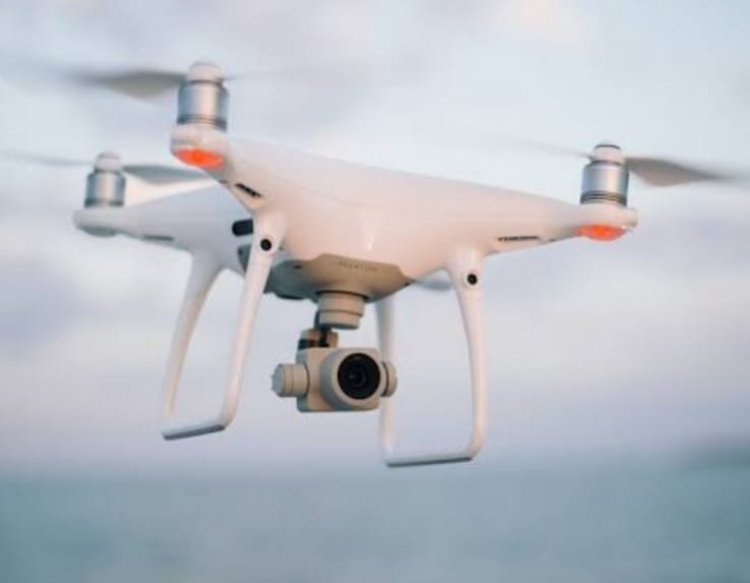Drone Terror is a New Challenge for India's National Security
With evolving security concerns in India, one such new paradigm of security concern is drones. The following commentary looks at how drones pose a significant risk to our nation and national security and how the government intends to respond to this new challenge to national security.

Commentary
By Majid Hyderi
India faces a new terror threat—more severe than before— in the form of drone attacks. On June 27, two low-flying drones attacked the high-security technical area of the Indian Air Force (IAF) Station in Jammu and Kashmir, setting the alarm bells ringing.
In 2018, when Syrian rebels used homemade drones to attack Russian military bases in Syria, one couldn’t have imagined that India would face a similar situation barely two years later. The drone terror has taken India by surprise. Believed to be the first such drone strike on the Indian soil, the first attack came on the fortified-security-establishment of the Indian Air Force.
Drone attack on Indian soil
As per the preliminary probe by the National Investigation Agency, reportedly two low-flying drones, remote-controlled from across the border, were used to drop the two improvised explosive devices (IED) that exploded in the fortified area in the City of Temples. Two IAF personnel received minor injuries in the incident.
The drones are believed to have brought along the IED payload of around fifteen kilograms each, dropped deep inside the winter capital of J&K. What makes the possible role of neighbouring country Pakistan even intriguing is that the aerial distance between the international border and the Jammu airport is only 14 kilometres. NIA reports reveal that the investigators suspect that the drones took a 180-degree turn after hitting the target. Forensic analysis suggests that the explosive used in the attack was RDX, packed into what is known as shaped charges, which direct explosive energy so it can penetrate armour or concrete.
Drone sighting along the borders or using these flying machines for arms droppings is not new in the country. In roughly the past two years, numerous such incidents have been reported from North India. Apart from J&K, neighbouring Punjab has also been the target. In December 2020, Punjab Police seized 11 hand grenades—believed to have been airdropped by a drone—from a sugarcane field near the international border in the Gurdaspur district of the once militancy infested state.
In J&K, drone infiltration is even more frequent. In June 2020, a drone carrying an M4 carbine and ammunition crashed at Maniari in Kathua, some 250 metres from the border. Then, in September same year, a drone delivered an M4, a Kalashnikov assault rifle, six pistols and ammunition, to a location near Samba, some 11 kilometres from the same border. A third weapons drop, involving three Kalashnikovs, two pistols, three grenades and ammunition was made at Guardian, near frontier Rajouri, in the same month.
These are the incidents where security forces recovered the payload. No one, however, knows assuredly how many other such droppings may have taken place or where.
Government response
The drone terror is a serious threat that you don’t necessarily need to be a security expert to press the panic button. If Jammu has been the first target, cant Pathankot in Punjab or even Mumbai be the next? After all, if the attackers of the 26/11 terror strikes reached the financial capital, can’t drones be the next possible medium?
The government’s initial response to the recent drone attack, however, looks a bit chaotic. After the incident, a few districts in J&K individually came up with new directives. These included a ban on the use, sale and possession of drones or similar low flying objects. While the frontier district of Rajauri was first to impose the ban, a week later, the summer capital of Srinagar seconded the suit, to be followed by few others. Jammu district has made Civil Secretariat and the Raj Bhawan no-fly zones. Such a district-wise reaction to a threat to national security suggests that the government didn’t have a unified strategy in place.
Ideally, the Lieutenant Governor, Manoj Sinha, should have instantly called a unified command meeting to fix modalities for the security beef up, expected to be uniform for entire militancy-infested Union Territory and not pigeon-holed into districts. The security establishment needs to be reminded that new modes of sabotage by technology reduce costs and risk identification for terrorists. The Jammu attack sets that example for the case study.
If the drone technology grows with each passing moment, so does its flight-time and payload capacity. After the Syrian rebels used homemade drones on Russian military bases—the same year witnessed the Venezuelan President having a close shave when a drone aimed at him missed the target and exploded a short distance away. Subsequently, in 2019, Houthi rebels claimed responsibility for bombing Saudi oil installations using drones.
In the wake of episodes of military escalation with two neighbouring countries in the last few years, drone terror is a new challenge for national security. The government led by Prime Minister Narendra Modi needs to take the issue even more seriously to make India even stronger and resilient against such attacks.
Majid Hyderi is a Srinagar based journalist who freelances for Indian and international media outlets. He has written extensively on Kashmir centric terrorism and regularly appears on various news channels.
Disclaimer: This article is the author's individual scholastic contribution and does not necessarily reflect the organisation's viewpoint.
























